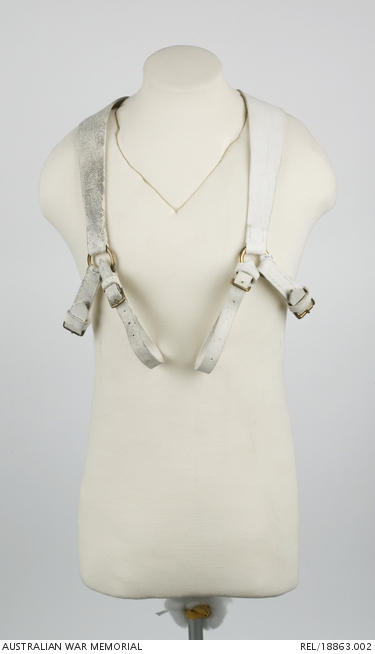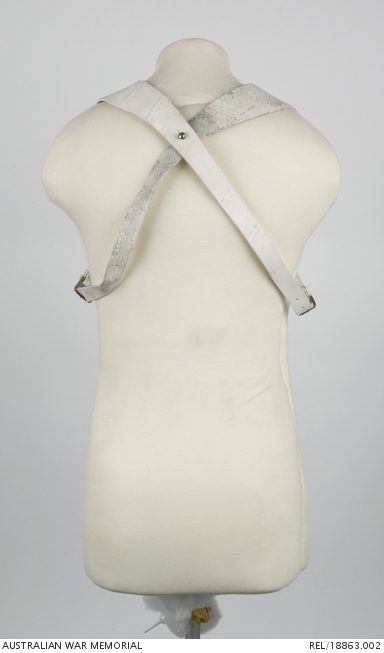| Place | Oceania: Australia |
|---|---|
| Accession Number | REL/18863.002 |
| Collection type | Heraldry |
| Object type | Personal Equipment |
| Physical description | Brass, Buff leather |
| Maker |
Unknown |
| Date made | c 1871-1877 |
| Conflict |
Australian Colonial Forces, 1854-1900 |
1871 Pattern Valise Equipment braces and straps : British and colonial forces


Buff leather braces and straps, 1870 Pattern Valise Equipment (first published in 'Regulations for the Equipment of the Army' published in 1870). Each brace consists of a single shaped strap (7/8 inch wide and 33 inches in length), widening to 2 1/2 inches where it passes over the shoulder, sewn to a brass brace ring at one end with a billet at the other. The braces are joined together at the centre back with a brass stud secured to the underneath brace and threaded though a slit in the top brace. Two angled leather guides, through which the great coat straps are looped and threaded, are sewn to each brace with a double row of stitching along each edge of the guide. Two buff leather straps are sewn to the brace ring (1 3/4 inches in diameter) at the front of the brace: a shorter one (5 inches in length and 1 inch wide) with two rows of stitching along its length and a brass buckle with roller and leather keeper which was fastened under the arm to the free end of the opposite brace; and a longer strap (14 inches in length and 3/4 inch wide) with billet, brass buckle and leather keeper which passes through the brass loop on the front of the waist belt.
In 1865 a committee was appointed to evaluate infantry equipment for the British army. By 1870 a pattern had been approved and was issued from 1871 following acceptance trials of the Martini-Henry rifle. The complete equipment consisted of a waistbelt, two pouches, an ammunition bag, a pair of braces, two great coat straps, a mess-tin strap, two valise supporting straps and a valise. This pair of braces and straps is of the original 1870 design as the brace is made of one piece of leather. In 1877 a second variant was introduced (LoC 3264) in which each brace was made of two parts buckled together. Braces were made in four sizes and marked accordingly: S, MS, M or L.